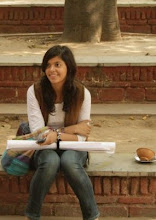Place: Ashok Nagar, West Delhi, New delhi, 110018
1,2,3…..it is very hard to count the number of streets, you can surely forget about knowing exactly the number of houses and, the number of people is just totally OUT OF QUESTION! I have never really been able to define the boundaries of this place; I know there is a certain distance to which I feel safe and then suddenly its another zone. However, this feeling of safety is also not constant through all the 'edges', some directions it reduces gradually, and the other sudden and stark.
It is easy to find more than 500 'Ahuja' families living here. Every time I take a walk am sure to greet at least 20 'namastes' and 'sat sri akals' (the sikh greeting). There is a continuous opportunity to work here, although the quality of life is not guaranteed. There are hospitals and clinics here, although good infrastructure is not guaranteed. It really is a poor settlement, where most of the people somehow became rich with time. I know, I have always looked down at the development level of this place, probably because of the infrastructural detail that I have been subjected to in my early years. However, there is still something that makes me never want to leave this place. I wonder if it is 'just' the sense of belonging or is there more to it. There are more gurudwaras and temples here than there were in the entire of Moscow. I have heard a lot of people say that growing up in different countries gives you a larger perspective; they might probably be right, but what it also does is confuses you to where exactly you belong. Yet, there is something about this specific place that I can just so easily and quickly relate to.
My relatives have lived here for over two generations and by now we have everything 'personalized', from a family doctor to a family gurudwara. These are the places where I might not know the people, but they would all not only know my name, but all about me and my family. Its funny how the local landmark is a SWEET SHOP, it definitely says something about the people. Also, with the developing Delhi, Ashok Nagar has developed too. Now there is a metro access in a five minute walking distance from my house. Such transport and connectivity shakes the whole concept of boundaries for areas like these. Within breaths you reach an area which is named different, but still looks exactly the same. Although, there is some deep mystery or psychological understanding that makes this other place FEEL different. It might be strange, but I can never figure out this imaginary border line. Despite the many homes I have had in many different countries, I know for fact, that no place else have I felt the way I feel down here at Ashok Nagar.















